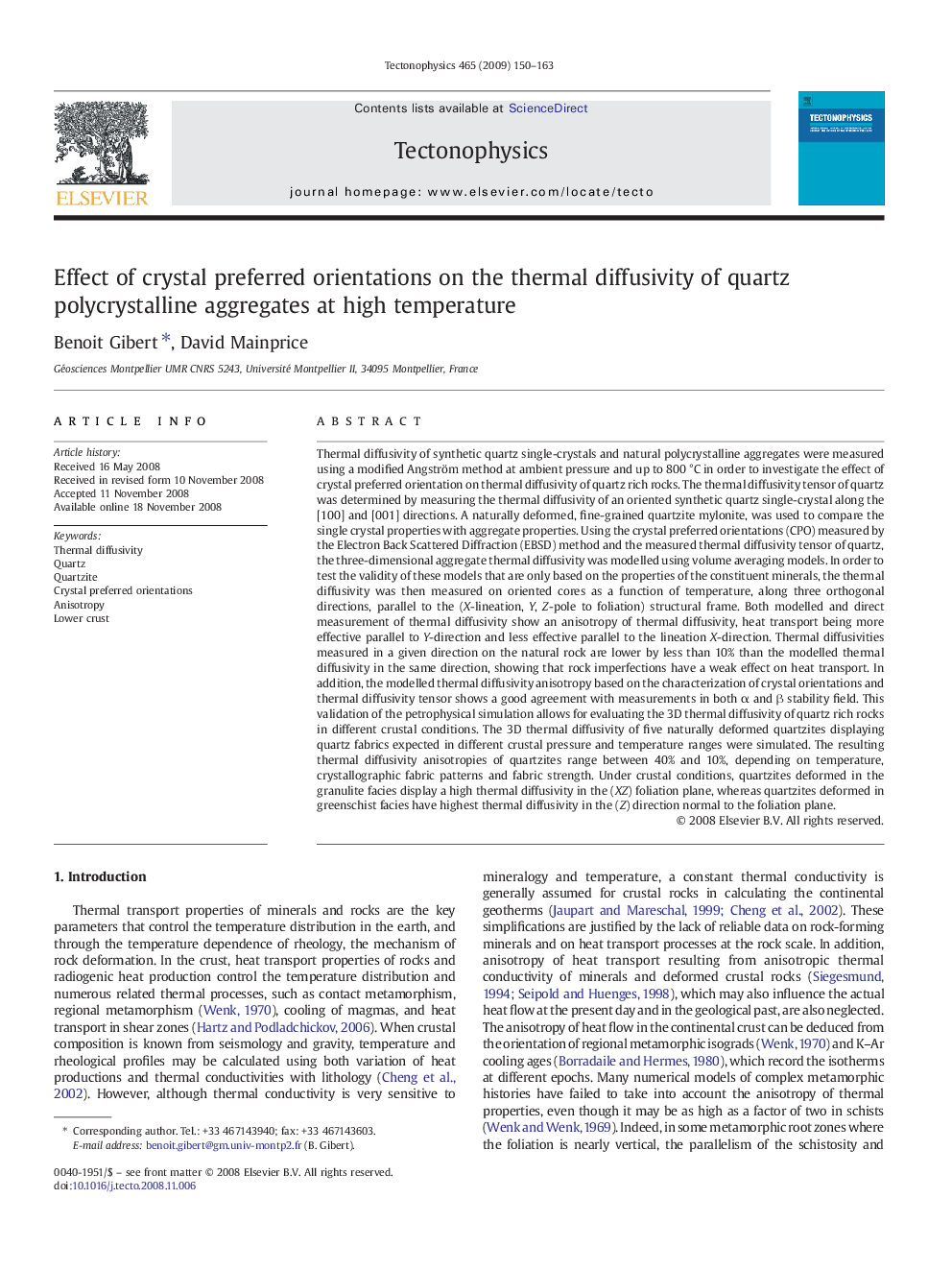| کد مقاله | کد نشریه | سال انتشار | مقاله انگلیسی | نسخه تمام متن |
|---|---|---|---|---|
| 4694364 | 1636900 | 2009 | 14 صفحه PDF | دانلود رایگان |

Thermal diffusivity of synthetic quartz single-crystals and natural polycrystalline aggregates were measured using a modified Angström method at ambient pressure and up to 800 °C in order to investigate the effect of crystal preferred orientation on thermal diffusivity of quartz rich rocks. The thermal diffusivity tensor of quartz was determined by measuring the thermal diffusivity of an oriented synthetic quartz single-crystal along the [100] and [001] directions. A naturally deformed, fine-grained quartzite mylonite, was used to compare the single crystal properties with aggregate properties. Using the crystal preferred orientations (CPO) measured by the Electron Back Scattered Diffraction (EBSD) method and the measured thermal diffusivity tensor of quartz, the three-dimensional aggregate thermal diffusivity was modelled using volume averaging models. In order to test the validity of these models that are only based on the properties of the constituent minerals, the thermal diffusivity was then measured on oriented cores as a function of temperature, along three orthogonal directions, parallel to the (X-lineation, Y, Z-pole to foliation) structural frame. Both modelled and direct measurement of thermal diffusivity show an anisotropy of thermal diffusivity, heat transport being more effective parallel to Y-direction and less effective parallel to the lineation X-direction. Thermal diffusivities measured in a given direction on the natural rock are lower by less than 10% than the modelled thermal diffusivity in the same direction, showing that rock imperfections have a weak effect on heat transport. In addition, the modelled thermal diffusivity anisotropy based on the characterization of crystal orientations and thermal diffusivity tensor shows a good agreement with measurements in both α and β stability field. This validation of the petrophysical simulation allows for evaluating the 3D thermal diffusivity of quartz rich rocks in different crustal conditions. The 3D thermal diffusivity of five naturally deformed quartzites displaying quartz fabrics expected in different crustal pressure and temperature ranges were simulated. The resulting thermal diffusivity anisotropies of quartzites range between 40% and 10%, depending on temperature, crystallographic fabric patterns and fabric strength. Under crustal conditions, quartzites deformed in the granulite facies display a high thermal diffusivity in the (XZ) foliation plane, whereas quartzites deformed in greenschist facies have highest thermal diffusivity in the (Z) direction normal to the foliation plane.
Journal: Tectonophysics - Volume 465, Issues 1–4, 20 February 2009, Pages 150–163